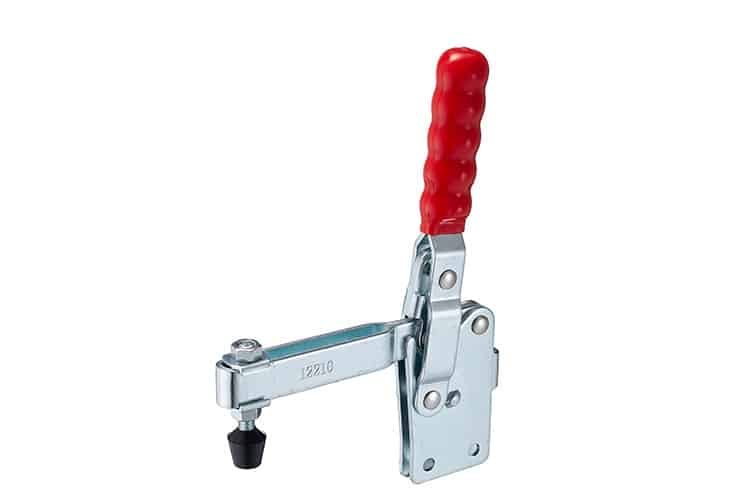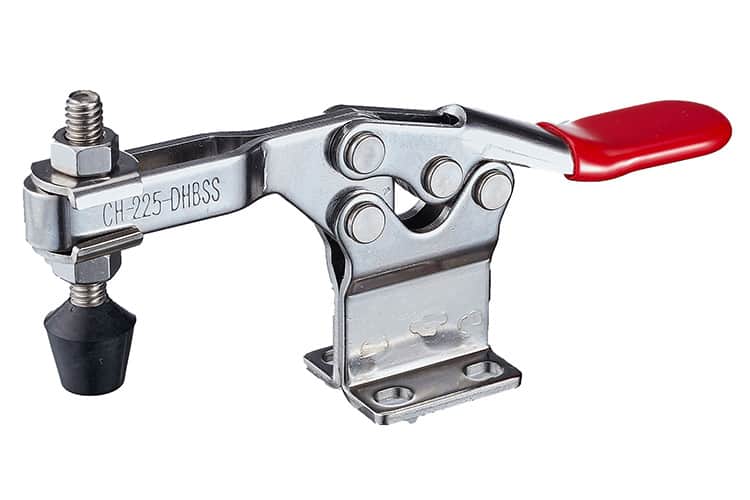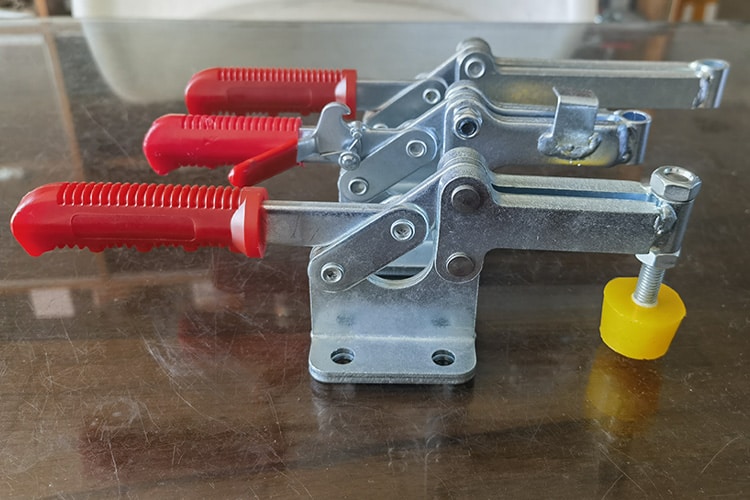The woodworking realm, much like any technical field, presents tools that may look similar yet function differently. The choice between vertical and horizontal toggle clamps, for instance, is often a topic of debate among craftsmen.
While vertical toggle clamps apply pressure downward onto a workpiece, horizontal toggle clamps operate with a side-to-side action. The selection often depends on the specific requirements of a project.
Diving into this detailed comparison, we aim to equip you with the knowledge to make an informed decision for your next project.

Vertical Toggle Clamps
Vertical toggle clamps, as the name suggests, exert a vertical force. They are characterized by their handle that moves in an up and down fashion.
The main advantage of these clamps is their compact design. They require less space on your workstation and are ideal for situations where height is a constraint. Another prominent feature is their direct downward pressure, which is essential for projects needing strong vertical hold without any side shift.
Horizontal Toggle Clamps
Horizontal toggle clamps, on the other hand, are designed with handles that move horizontally. Their operational mechanism involves side-to-side action.
One significant advantage of horizontal toggle clamps is their ability to provide force in a linear path, ensuring the workpiece doesn’t rise. They’re excellent for tasks requiring lateral pressure. Moreover, they often come with longer handles, which can offer more leverage, making it easier to exert more force with less effort.

Key Considerations
When choosing between the two, it’s essential to evaluate the nature of your project. Vertical clamps are excellent for projects that need consistent downward pressure. They ensure the workpiece stays firmly grounded.
Horizontal clamps are the go-to choice for tasks that might cause the workpiece to lift. They are adept at keeping materials steady on a horizontal plane, providing even force distribution across the workpiece.
Application Scenarios
Understanding real-world applications can further aid in making a decision. Vertical clamps, for instance, are favored in scenarios where a piece needs drilling from the top. They keep the piece firmly grounded, preventing any upward movement.
Horizontal clamps shine in situations like edge gluing or joining two pieces side by side. They ensure that the workpieces align perfectly, providing a uniform bond without any gaps.

User Experience
The user’s comfort and the ease of operation should never be overlooked. Vertical clamps, due to their compact design, are easy to install and operate in tight spaces.
Horizontal clamps, while requiring more lateral space, often come with ergonomic handles, making the application of force more comfortable for the user. This design minimizes fatigue, especially during prolonged usage.
Conclusion
Vertical and horizontal toggle clamps, while serving similar foundational purposes, offer unique advantages based on their design and operational mechanism. Recognizing the distinct requirements of your project and understanding the strengths of each clamp type is the key. Armed with this knowledge, you’re well-equipped to ensure precision and efficiency in your woodworking tasks.
You might also be interested:
